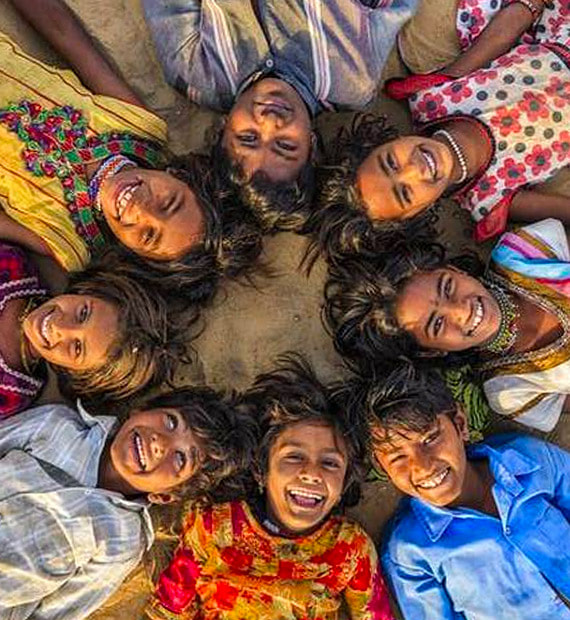|
Kelsang What can be done now, when COVID-19 has deepened the scars of the gender gap in education? Can women specifically play a role in helping improve these situations? It has been proven that the gender gap in education will lower in communities with female leaders. Where women lead, women win!
How has COVID-19 been worse for marginalised girls? Evidence suggests that on top of the gender gap that was already pre- existing before the ongoing pandemic, COVID-19 has made it obviously worse in many ways. Firstly, months after the lockdowns, there is fresh evidence suggesting that due to school closures, girls faced the burden of household chores [1] due to gender- role cultural norms, which left them with less time for their studies. Second and even more heart wrenching evidence suggests that school closures due to COVID- 19 left girls at more risk of gender based violence and abuse in their households, which directly affected their overall development [2]. Finally, research also shows that because many schools normally provide mid- day meals and environmental support for students, their closures meant that nutritional and social support were taken away which impacted girls students poorly [3]. So, can women specifically play a role in helping improve these situations? We think so. Where women lead, women win- how and where? Many studies have shown that there is a direct relationship between women leaders or role models in society and improvement in learning outcomes of the girl student. In communities where there are more women leaders, girls are proven to suffer less from the burden of household chores and have better school learning outcomes [4]. Let’s look at some cases studies below that shows this: JPAL study in India [4] - A study by JPAL showed that in comparison to a village where there was no women leader, villages with women leaders in the local Panchayats had a higher percentage of female adolescents studying beyond secondary schools. World Vision’s Project Hope in Pakistan [5] - An excellent project by World Vision, ‘Project Hope’ used the model of peer role- models to reduce the school dropout rates of school girls in Pakistan. An out- of- school girl was paired with a ‘peer’ role model who was studying in school and they participated in recreational activities and vocational training together. By the end of the project, enrollment of out- of- school girls increased by a whopping 46% ! Women’s Education Project in India [6] - The WEP initiative partners with girl-focused NGOs and young, vulnerable women, (ages 16-24) receive a combination of vocational and capacity building education and acquire job-ready skills to pursue careers- all with the support of fellow women peers, mentors and female role models. The above are just a few examples of how having female role models can positively impact the education outcomes of the girl child. This important factor needs to be incorporated into policies and programs that are aiming to improve education for the girl child everywhere, especially as the whole world copes with COVID-19’s repercussions! REFERENCES: [1] UNESCO (2020) Covid-19 education response webinar: addressing the gender dimension of COVID-related school closures. Synthesis report. 3rd April 2020. [Online]. Accessed at: https://apa.sdg4education2030.org/sites/ apa.sdg4education2030.org/files/2020-04/UNESCO%20COVID-19%20webinar- Addressing%20the%20gender%20dimensions%20of%20school%20closures.pdf [2] 5 Care and International Rescue Committee (2020). Global Rapid Gender Analysis For COVID-19. [Online]. Accessed at: https://inee.org/system/files/resources/globalrgacovidrdm33120final.pdf [3] 3 UNICEF (2020). Five Actions for Gender Equality in the COVID-19 Response. UNICEF technical note. https://www.unicef.org/media/66306/file/Five%20Actions%20for%20Gender%20Equality%20in%20the%20COVID-19%20Response: %20UNICEF%20Technical%20Note.pdf [4] Beaman, Lori, Esther Duflo, Rohindi Pande, and Petra Topalova. 2012. “Female Leadership Raises Aspirations and Educational Attainment for Girls: A Policy Experiment in India.” Science 335, no. 6068: 582–86. [5] World Vision. N.d. “Harnessing Opportunities for Productive Education for the Girl Child.” World Vision, Federal Way, Wash.
0 Comments
Leave a Reply. |
Archives
March 2024
Categories |
21213 SE 42nd Pl.
Issaquah WA 98029
Issaquah WA 98029
Turn the Bus is a registered 501 (c) (3) US nonprofit organization.
© Turn the Bus. All rights reserved.
© Turn the Bus. All rights reserved.


 RSS Feed
RSS Feed
